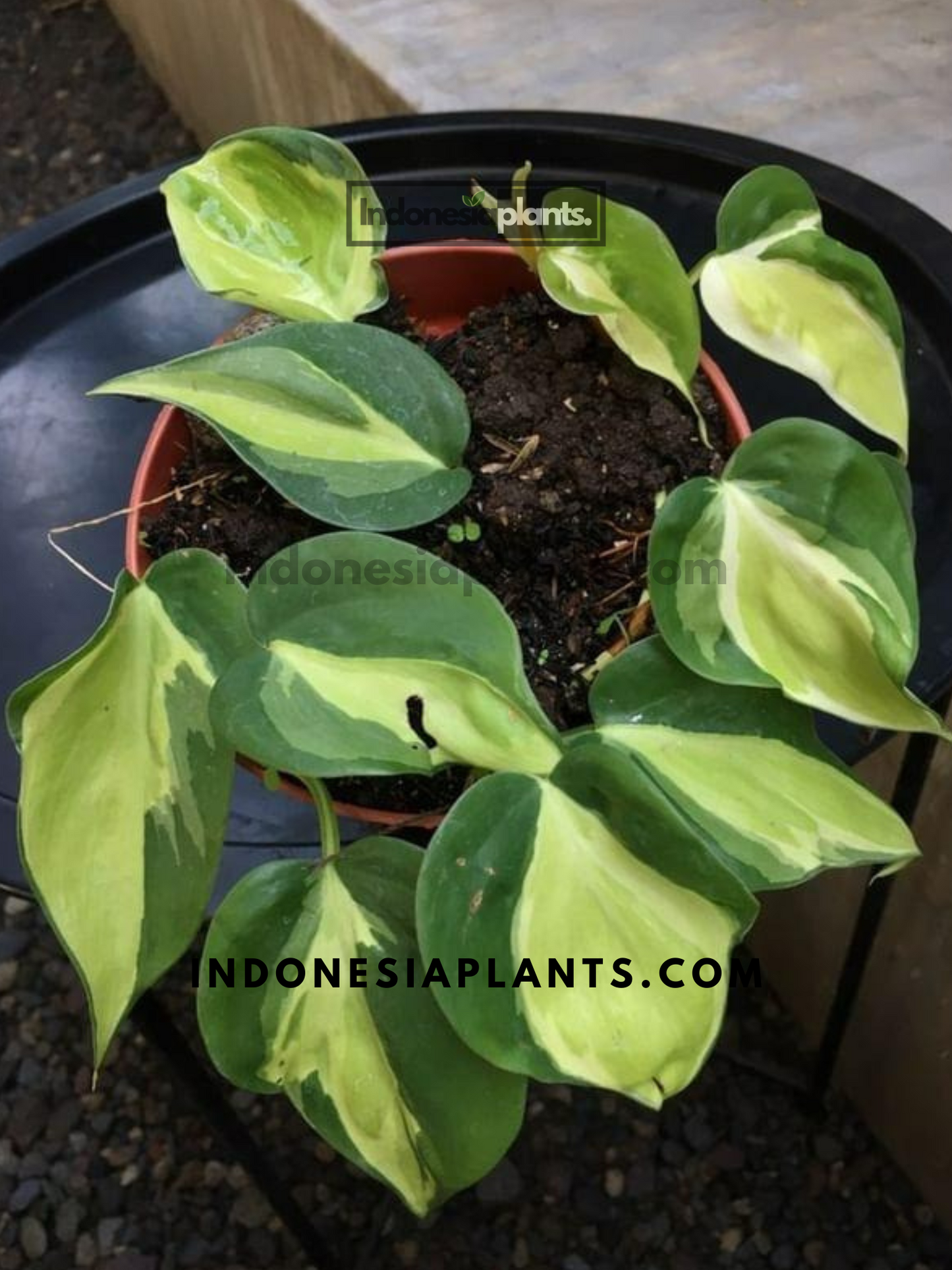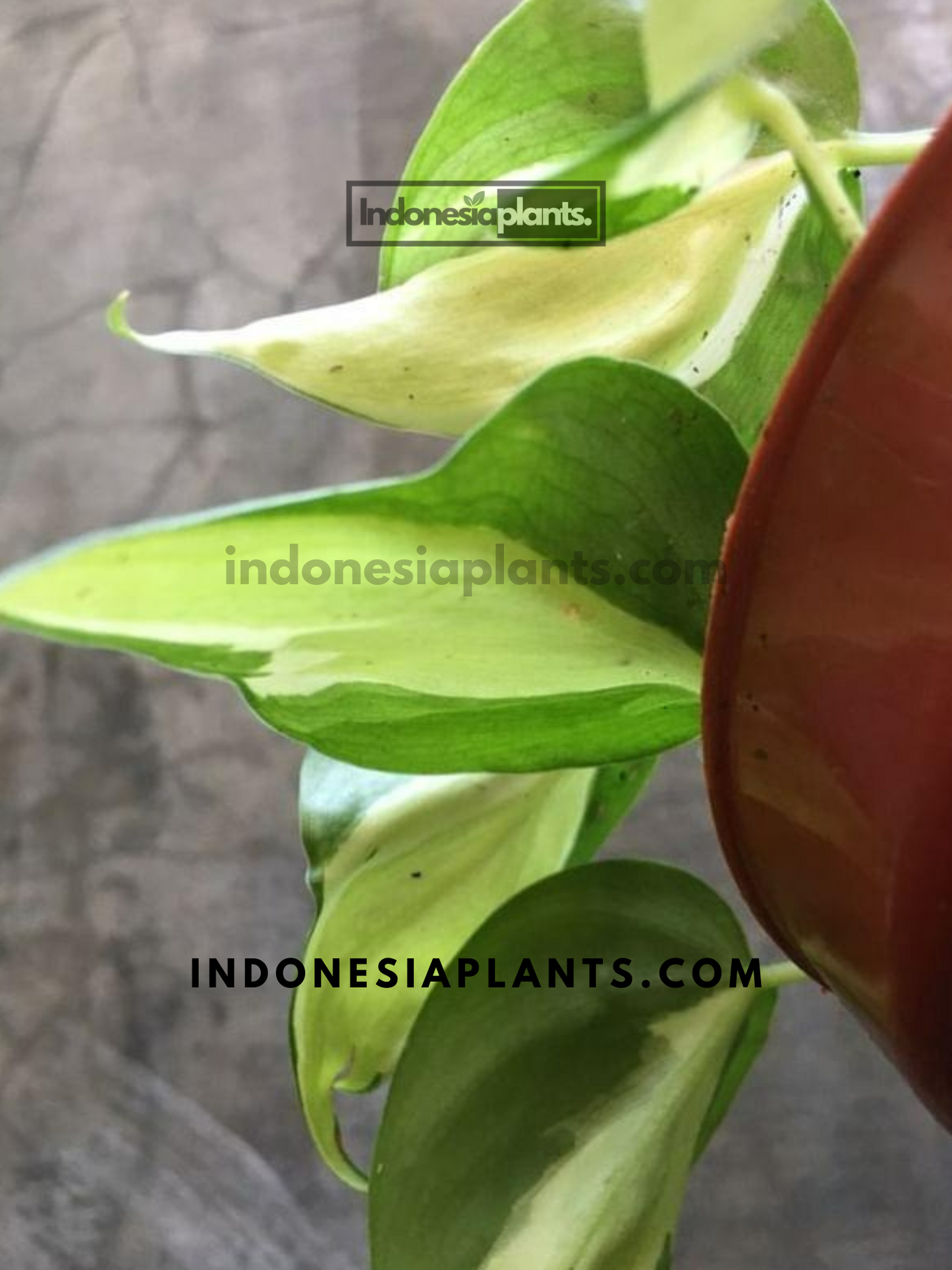indonesiaplants
Philodendron Gabby
Philodendron Gabby
Couldn't load pickup availability
See photos for reference of the plant features only. Sent to you more likely as featured with descriptions below:
Minimum of 4 leaves
Rooted not cuttings
Philodendron Gabby: A Beautiful Addition with Vibrant Green Leaves
Philodendron Gabby is an eye-catching tropical plant known for its large, deep green leaves and trailing growth habit. Its vibrant foliage brings a lush and refreshing look to any space, making it perfect for plant lovers who want to add an element of nature to their home.
Distinctive Features of Philodendron Gabby:
- Large, Deep Green Leaves: The broad, vibrant green leaves make it a standout in any plant collection.
- Trailing Growth: It’s a vining Philodendron that looks beautiful when allowed to trail or cascade over the sides of a container.
- Tropical Elegance: Perfect for creating a lush, tropical vibe in your home.
Hue (Base Tones & Lightness)
Philodendron ‘Gabby’ is a luminous take on the classic heart-leaf. Expect a bright palette where creamy white and soft ivory mingle with fresh to mossy greens. New blades often open very pale before settling into a balanced mix; some leaves present broad light panels, others a mist of flecks over green. Because expression is naturally variable, treat each leaf as its own artwork and style your listing photos to show the range.
Pattern (How the Color Lands)
Variegation shows up as half-moons, wide sectors, and fine speckling, frequently running along the midrib or pooling at the margins. High-white leaves look angelic but need thoughtful placement; greener leaves tether the composition and keep the vine vigorous. Over time, a trained plant will display a gallery of different “print runs”—light, medium, and dark leaves that make a beautiful rhythm on a wall or shelf.
Finish (Surface & Texture)
The blades are cordate (heart-shaped) with a satin to semi-gloss surface. Under side light, pale panels glow while the green fields hold a calm sheen—no harsh glare, just a soft highlight that reads premium in photos. Petioles remain neat, so the silhouette stays tidy even as internodes lengthen slightly with age.
Contrast (Styling & Pairing Ideas)
- Planter palette: Sand, ecru, oatmeal, or charcoal vessels frame the white-on-green story. Matte ceramics or stoneware keep the eye on the foliage.
- Backdrop: Limewash walls, pale timber, or microcement amplify the glow of high-white leaves; graphite or blackened metal adds an editorial edge.
- Companions: Pair with a velvety Anthurium (plush texture) or a silver-brushed aroid (e.g., Philodendron brandtianum) to create a deliberate conversation of surfaces without visual noise.
- Display modes: Let vines cascade from a shelf for a soft ribbon of light, or guide one leader up a slim trellis/pole for a crisp vertical line. A mixed habit—one trained, one trailing—adds depth in a small footprint.
Care (Keep the Whites Crisp & the Plant Happy)
- Light: Bright, diffused daylight all day. Filter strong midday sun to protect high-white tissue. If spacing stretches or whites mute, increase overall luminance (still filtered) rather than fertilizer.
- Water: When the top 2–3 cm (≈1 in) of mix dries, water thoroughly and allow full drainage. Favor a calm, repeatable rhythm—steady moisture keeps edges clean on pale panels.
- Substrate: Oxygen-forward aroid blend (chunky orchid bark + coco fiber/coir + pumice/perlite, plus a light sphagnum buffer). Air first, gentle moisture second.
- Climate: 18–29 °C (65–85 °F) with ~50–70% RH and gentle airflow. Avoid AC/heater blasts directly on foliage.
- Feeding: Light nutrition at ¼–½ strength during active months supports leaf finish; prioritize light quality before extra feed.
- Training & Grooming: A slim moss pole or trellis tightens internodes and elevates leaf size. Rotate a quarter-turn every two weeks for even color. Dust pale sections gently with a soft cloth and remove spent sheaths for a crisp crown.
- Color management tip: If a run of leaves skews very white, allow the apex a touch more distance from the brightest point so the next set develops a bit more chlorophyll—this helps long-term vigor.
Troubleshooting Quick Read
- Brown on white areas: Usually late watering or direct sun—tighten cadence and add filtering.
- Long gaps / smaller leaves: Raise overall brightness (filtered) and guide the stem closer to its support.
- Muted pattern: Confirm even luminance across the canopy; avoid deep shade pockets.
Kindly reach out to us at indonesiaplants@gmail.com if you have difficulties in your purchase or have any questions.







